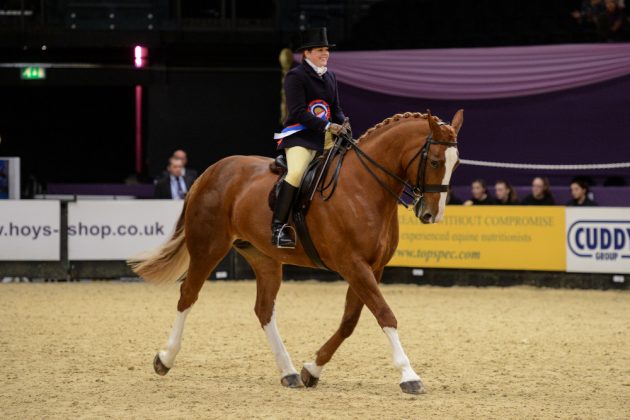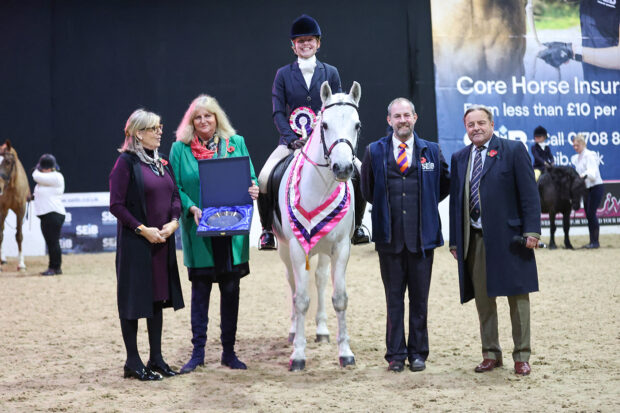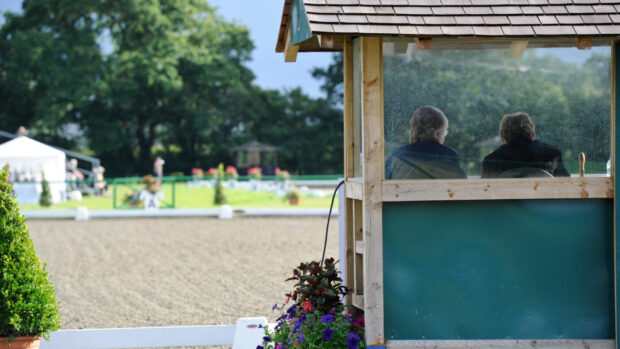One of the most eagerly-anticipated finals at Horse of the Year Show (HOYS) is the SEIB Insurance Brokers’ enduringly popular Search For A Star competition for strictly amateur combinations.
Many previous winners have gone on to star in the open spotlight, but in order to get to HOYS, they first have to impress the judges at one of the five qualifiers staged around the country from April onwards.
Ride, type, conformation and turnout are all assessed by a panel of judges, who are happy to offer advice and tips along the way. In addition, there is a special “workshop” for qualified finalists, where the finishing touches are added to each combination prior to their big day at HOYS.
Standards are expected to be higher than ever next season, so who are the judges and what are they looking for?
David Bartram-Lawton
Ride judge David Bartram-Lawton, who has officiated in the SFAS series for 16 years and will do so again in 2018, brings a wide range of experience with him. David was a three-day eventer, competing at Badminton and Burghley as well as representing Great Britain at Breda and Boekelo. He was a highly successful producer, trainer and showman, winning the HOYS working hunter final twice with different horses, in addition to hunting for more than 30 seasons. He has been a judge on a number of panels for many years and has officiated at HOYS and Royal International on several occasions.
What he looks for
“As a ride judge, I’m looking for a light, uphill, mannerly and balanced ride that is accepting of the bit and leg — sadly, we see a lot of SFAS horses that are over-bitted.
“It’s also very important for competitors to get different people to sit on their horses beforehand as it prepares them to carry a ride judge.
“All too often, people tend to over-ride and do not keep their horse between hand and leg and in rhythm — hence the pace is too fast and their gait runs out of the front door.
“A green horse in the show ring can be forgiven, but an unmannerly horse should not be — their time in the class is very short and if they cannot behave, they need more education and schooling. Riders do not realise the amount of work that professionals put in on a daily basis.”
Next, the conformation judges reveal their hates and must-haves, and offer advice on how to succeed at the qualifiers. We speak to two who officiate on the ground, assessing conformation and type as well as offering help and advice.
Richard Ramsay
Richard is a qualified British Horse Society Instructor (BHSI) and with his wife Marjorie, has been breeding, producing and training show horses and ponies for over 30 years. Team Ramsay has won at the very highest level with a wide variety of animals they have owned, trained or bred. They are also acclaimed judges, as much in demand overseas as they are in the UK, and Marjorie judged conformation at the SFAS final until recently.
What he’s looking for
“First and foremost, the horse or pony must be correct in its conformation and fit the criteria for type,” he says. “Many that come forward simply aren’t potential show horses.
“We would probably forgive greenness and lack of ringcraft, because those riders who qualify really go to town to improve themselves, as can be seen at HOYS.
“We don’t forgive downright bad manners, but many of the horses are not used to going in company and get rather competitive. However, the keen owners will take them away and really do their homework to correct this.
“If we see a horse on the day that has potential but goes badly, we tell the rider to get help and come again to another venue, as that horse could be a future star — given the right direction. The 2017 champion [Lynsey Lawrence’s Mister Fezziwig] was a case in point as this was their second year of trying to qualify.
“In all cases we want a straight-moving, well put-together horse or pony that fits the category of the class.
“We have often told competitors they are in the wrong class — for example they may think they have a riding horse but it’s actually a lightweight hunter, or vice versa — and it’s great when they then reappear and qualify.”
Chris Bartram-Lawton
Chris judges from time to time but also stewards, commentates and gives advice on turnout at the venues and at the pre-HOYS workshop. He hunted, produced and rode show and competition horses for many years and is a popular judge both in the UK and abroad.
What he looks for
“The horses must be shod regularly and turnout makes a huge difference too,” he says. “Tails should be pulled and not shaved.
“The horse should have a good topline and not be too fat.
“On the go-round, competitors must ensure that they take notice of their fellow riders and, more importantly, the ring stewards who are there to inform and keep everyone safe in the ring.
“When presenting your horse for conformation, you need to walk out with purpose, stand the horse up well without pushing and pulling, and pretend you are trying to sell it to the judge.”
Continued below…

Search For A Star: 9 things the judges are looking for
The qualifiers for the SEIB Search For A Star series, for amateur showing competitors, are underway for the final at
SEIB SFAS qualifier dates/venues for 2018:
15 April, Osbaldeston, Lancs
20 May, Stretcholt, Somerset
10 June, Bury Farm, Bucks
8 July, Alnwick Ford Equestrian Centre, Northumberland
5 August, Vale View, Leics
For all the latest news and reports, don’t miss H&H magazine, out every Thursday





